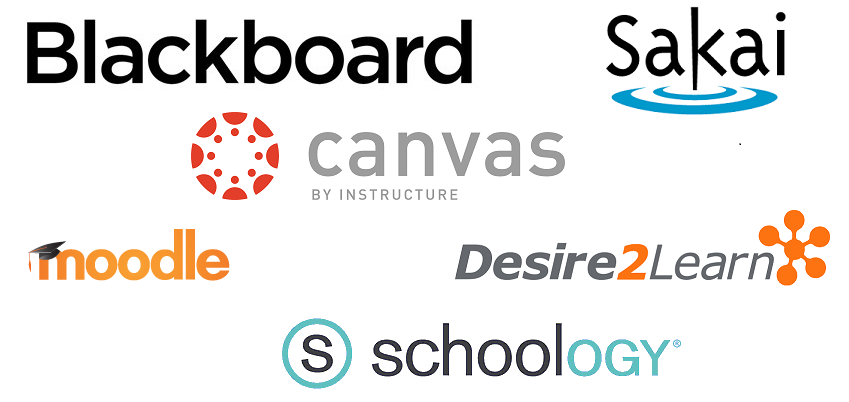Governmental and Not-for-Profit Accounting and Auditing: An Active Learning Workbook, 2e
by Convery
ISBN: 9781618532732 | Copyright 2019
TabsThis workbook and related instructional resources in myBusinessCourse are designed to develop accounting and auditing knowledge of state and local governmental entities and not-for-profit entities sufficient to pass related parts of the CPA exam. Further, use of active-learning assignments that take students to real-world financial statements, standards-setters’ websites, Accounting Standards Codification, academic research, and IRS Form 990s develop critical thinking skills needed by auditors, consultants, financial managers, board members, taxpayers, and philanthropists. Author-prepared eLectures, Guided Examples, question bank, and activities provide instructors with a platform on which to customize a 1 credit or 3 credit; flipped or lecture; hybrid/online or in-person; undergraduate or graduate course for students in accounting, public administration, and nonprofit management programs.
The instructional approach for which these resources were designed is one in which students are actively engaged in learning about accountability in the government and not-for-profit sector entities by examining real-world financial statements and authoritative sources. Students will learn by doing. Traditional texts for lecture formats do not match up with this approach.
This workbook is the cornerstone to an instructional approach that includes in-class and out-of-class assignments available in myBusinessCourse, Cambridge Business Publisher's online learning and assessment system. Assignments include activities and multiple choice questions that can be done individually or in teams.
The workbook text is intentionally kept to a minimum so students will use the tables and figures to develop a framework for recognizing accounting, reporting, and auditing issues.
Concepts and materials are presented in ten modules--the first module is an introduction to the GNP environment; two modules on not-for-profit organizations follow; five modules on state and local governments are next; a module on performance measurement and financial statement analysis follows; and finally, there is a module on auditing GNP entities that receive federal awards.
Not-for-profit organizations are presented before governmental entities to ease students' transition from business entities to not-for-profit organizations (both follow FASB guidance) to governmental entities that follow the more complex GASB financial reporting model. For simplicity, all modules have four learning objectives.
These materials are easily adapted to a variety of pedagogies and course formats. One approach is to have, for each module, students complete the following tasks:
1.) Pre-class: Read the module in the workbook, watch an eLecture video, review Guided Examples, and complete a self-assessment quiz.
2.) In class: Work on active-learning activities in teams or individually.
3.) Post-class: Follow up with individual activities.
Following this set of tasks for each module will prepare students to take an individual final exam at the end of the semester. If the instructor allows, the workbook can be used throughout the semester for notetaking and then as a resource in an open-book comprehensive exam. All in-class and out-of-class assignments can be retrieved from and dropped back to myBusinessCourse, thereby keeping the course "paperless".
This approach covers the content and skill specifications outlined by the American Institute of Certified Public Accountants' Blueprint for the current version of the Certified Public Accountants (CPA) exam. GNP topics are explicitly included in three of the four parts of the CPA exam. This instructional approach provides strategies and resources for staying abreast of current developments that may be on future versions of the CPA exam.
This workbook is fully integrated online with the instructional resources in myBusinessCourse designed to serve as a platform adaptable to a number of course configurations: 1- or 3-credit course; quarter or semester; online, hybrid, or lecture delivery. The workbook is also available to each student as a full eBook through myBusinessCourse where the content is bookmarked into smaller readings for each module.
Instructional resources in myBusinessCourse include:
- Active-learning activities that students can do individually or in teams. Tasks include: examination of real-world financial statements with questions posed, journal entries, preparation of financial statements from a trial balance. Solutions are provided. Activities can easily be modified to use in different groups for multiple sections or across semesters. These activities are listed in the workbook after each learning objective.
- Question bank with multiple choice questions that can be used for quizzes or exams. Solutions are provided.
- eLecture videos to accompany each learning objective for each module (approximately 7-10 minutes for each learning objective)
- Guided Examples showing students how to do some of the complex problems.
- Post-class activities assembled in an Excel workbook for easy retrieval that expand on in-class activities often by asking students to choose a city or not-for-profit organization of their choice.
In addition to these resources in myBusinessCourse, end-of-module supplemental resources in this workbook include:
- Discussion Questions--tied to learning objectives
- Stay Current--references to pending changes to the authoritative literature
- Readings--academic research with discussion questions
• Three new modules that cover Business-Type Activities, Fiduciary Activities, Financial Statement Analysis
• Comprehensive Annual Financial Report set of 15 activities
• Activities Bank expanded to over 200 activities covering every learning objective in the workbook
• Multiple choice question bank updated and expanded
Module One: Introduction to the Government and Not-for-Profit Environment
Module Two: Not-for-Profit Organizations--Tax-Exempt Issues
Module Three: Not-for-Profit Financial Reporting
Module Four: State and Local Government (SLG) Financial Reporting
Module Five: Fund Accounting and General Fund Budgeting
Module Six: Governmental Activities: Capital Assets and Long-Term Liabilities
Module Seven: Business-Type Activities and Proprietary Funds
Module Eight: Fiduciary Activities and Funds
Module Nine: Performance Measurement Through Financial Statement Analysis
Module Ten: Government and Not-for-Profit Auditing
Introducing myBusinessCourse
myBusinessCourse is a complete, secure, web-based training and e-Learning solution. There is nothing to download or install; it is accessible through any modern web browser and most mobile devices.

eLecture Videos
- Created by the authors of the textbook
- Consistent with the textbook's explanations and approach
- Cover learning objectives and concepts from each chapter
- Ideal for remediation
- Ideal for online and hybrid classrooms

Guided Example Videos
- Created by the authors of the textbook
- Provide problem solving strategies as well as solutions
- Offer clear, step-by-step demonstrations of how to solve select problems from the textbook

Auto-graded Assignments
- Provides immediate feedback
- Create assignments using problems from the textbook
- Additional randomized versions of assignments provide extra practice
- Ideal for remediation
- Include select questions from test banks

Respondus LockDown Browser®
- Assessments are displayed full-screen and cannot be minimized
- Browser menu and toolbar options are removed, except for Back, Forward, Refresh and Stop
- Prevents access to other applications including messaging, screen-sharing, virtual machines, and remote desktops
- Printing and screen capture functions are disabled
- Copying and pasting anything to or from an assessment are prevented
- Right-click menu options, function keys, keyboard shortcuts and task switching are disabled
- An assessment cannot be exited until the student submits it for grading
- Assessments set up with LockDown Browser cannot be accessed with other browsers
- Students use their preferred device to take exams (iPad, Mac, Windows)
- Students will be prompted to install LockDown Browser prior to accessing the exam

Detailed Reporting Tools
- Quickly review the performance of individual students
- Quickly review the performance of entire class
- Use reports on student performance to customize your lectures to fit student needs
Enhanced eBook
- Save money
- Includes myBusinessCourse
- Integrates eLecture and demonstration videos
- Bookmarking
- Note taking
- Highlighting

Third Party Integrations
- Single sign-on
- Link to assignments in myBusinessCourse from your third party course
- Automatically sync gradebooks each night
Flashcards
- Study, learn and master key terms.
- With linear-mode, get full control over the deck. Go back and forth between cards, shuffle and auto-play the deck.
- With certainty-mode, test how well you know each term. If you are not certain you have learned the term, it will display again later in the deck.

Support and Training
- Technical support for students and faculty available daily
- Faculty training conducted daily
| LO | Learning Objective | Page | eLecture | Guided Example |
|---|---|---|---|---|
| LO5.1 |
Describe the purpose and components of fund accounting. |
45 | ||
| LO5.2 |
Explain the governmental budgeting process. |
48 | ||
| LO5.3 |
Journalize transactions and the accounting cycle. |
50 | ||
| LO5.4 |
Analyze the budgetary comparison schedule or statement. |
54 |
| Expand/Collapse All | |
|---|---|
| About The Author (pg. iii) | |
| Preface (pg. iv) | |
| Table of Contents (pg. vii) | |
| List of Tables (pg. x) | |
| List of Figures (pg. x) | |
| Module One: Introduction to the Governmental and Not-for-Profit Environments (pg. 1) | |
| 1.1 GNP Topics on the CPA Exam. (pg. 1) | |
| 1.2 Three Sectors of the U.S. Economy. (pg. 2) | |
| 1.3 Accounting Standards-Setting. (pg. 4) | |
| 1.4 Objectives of Financial Reporting for Each Standards-Setting Entity. (pg. 6) | |
| Module 1 Resources (pg. 8) | |
| Discussion Questions (pg. 8) | |
| Stay Current (pg. 8) | |
| Readings (pg. 8) | |
| Module 1 Notes (pg. 9) | |
| Module Two: Not-for-Profit Organizations— Tax-Exempt Issues (pg. 11) | |
| 2.1 Life Cycle of a Tax-Exempt NFP Organization. (pg. 12) | |
| 2.2 Public Charities vs. Private Foundations. (pg. 14) | |
| 2.3 IRS Form 990 Annual Information Return. (pg. 15) | |
| 2.4 Unrelated Business Income Tax. (pg. 16) | |
| Module 2 Resources (pg. 17) | |
| Discussion Questions (pg. 17) | |
| Stay Current (pg. 17) | |
| Readings (pg. 18) | |
| Module 2 Notes (pg. 19) | |
| Module Three: Not-for-Profit Financial Reporting (pg. 21) | |
| 3.1 FASB’s Conceptual Framework for NFP Financial Reporting. (pg. 21) | |
| 3.2 Required Financial Statements for an NFP. (pg. 22) | |
| 3.3 Transactions and Accounts Unique to NFPs. (pg. 27) | |
| 3.4 Specialized Industries. (pg. 29) | |
| Module 3 Resources (pg. 31) | |
| Discussion Questions (pg. 31) | |
| Stay Current (pg. 31) | |
| Readings (pg. 31) | |
| Module 3 Notes (pg. 32) | |
| Module Four: State and Local Government Financial Reporting (pg. 33) | |
| 4.1 Activities of State and Local Governments (SLG). (pg. 33) | |
| 4.2 Evolution of the Government Financial Reporting Model. (pg. 34) | |
| 4.3 Reporting Entity and Component Units. (pg. 39) | |
| 4.4 Measurement Focus and Basis of Accounting. (pg. 40) | |
| Module 4 Resources (pg. 41) | |
| Discussion Questions (pg. 41) | |
| Stay Current (pg. 42) | |
| Readings (pg. 42) | |
| Module 4 Notes (pg. 43) | |
| Module Five: Fund Accounting and General Fund Budgeting (pg. 45) | |
| 5.1 Purposes and Components of Fund Accounting. (pg. 45) | |
| 5.2 Governmental Budgeting Process. (pg. 48) | |
| 5.3 Accounting Cycle and Illustrative Transactions. (pg. 50) | |
| 5.4 Analyze Budgetary Comparison Schedules or Statements. (pg. 54) | |
| Module 5 Resources (pg. 55) | |
| Discussion Questions (pg. 55) | |
| Stay Current (pg. 56) | |
| Readings (pg. 56) | |
| Module 5 Notes (pg. 57) | |
| Module Six : Governmental Activities: Capital Assets and Long-Term Liabilities (pg. 59) | |
| 6.1 Typical Governmental Transactions. (pg. 59) | |
| 6.2 Account for General Capital Assets. (pg. 62) | |
| 6.3 Account for General Long-Term Debt. (pg. 65) | |
| 6.4 Transfers and Required Reconciliations (Schedules). (pg. 67) | |
| Module 6 Resources (pg. 69) | |
| Discussion Questions (pg. 69) | |
| Stay Current (pg. 69) | |
| Readings (pg. 69) | |
| Module 6 Notes (pg. 70) | |
| Module Seven: Business-Type Activities and Proprietary Funds (pg. 71) | |
| 7.1 Business-type Activities. (pg. 71) | |
| 7.2 Internal Service Funds. (pg. 73) | |
| 7.3 Enterprise Funds. (pg. 74) | |
| 7.4 Regulatory Accounting Principles. (pg. 75) | |
| Module 7 Resources (pg. 76) | |
| Discussion Questions (pg. 76) | |
| Stay Current (pg. 76) | |
| Readings (pg. 76) | |
| Module 7 Notes (pg. 77) | |
| Module Eight : Fiduciary Activities and Funds (pg. 79) | |
| 8.1 Agency Funds. (pg. 79) | |
| 8.2 Investment Trust Funds. (pg. 80) | |
| 8.3 Pension Trust Funds. (pg. 82) | |
| 8.4 Private-Purpose Trust Funds. (pg. 84) | |
| Module 8 Resources (pg. 85) | |
| Discussion Questions (pg. 85) | |
| Stay Current (pg. 85) | |
| Readings (pg. 85) | |
| Module 8 Notes (pg. 86) | |
| Module Nine: Financial Statement Analysis (pg. 87) | |
| 9.1 Objectives of Performance Measurement. (pg. 87) | |
| 9.2 Analysis of Not-for-Profit Organizations’ Financial Statements. (pg. 88) | |
| 9.3 Analysis of State and Local Governments’ Financial Statements. (pg. 91) | |
| 9.4 Analysis of the Federal Government’s and Agencies’ Financial Statements. (pg. 93) | |
| Module 9 Resources (pg. 94) | |
| Discussion Questions (pg. 94) | |
| Stay Current (pg. 94) | |
| Readings (pg. 94) | |
| Module 9 Notes (pg. 95) | |
| Module Ten: Governmental and Not-for-Profit Auditing (pg. 97) | |
| 10.1 Types of Audits and Opinions. (pg. 97) | |
| 10.2 Auditing Standards. (pg. 99) | |
| 10.3 Sources of GAAP. (pg. 101) | |
| 10.4 Single Audits and Required Reports. (pg. 102) | |
| Module 10 Resources (pg. 103) | |
| Discussion Questions (pg. 103) | |
| Stay Current (pg. 103) | |
| Readings (pg. 104) | |
| Module 10 Notes (pg. 105) | |
| Glossary (pg. 107) | |
| List Of Acronyms (with organizations’ websites) (pg. 109) | |
| Index (pg. 111) | |

Dr. Susan Convery
Dr. Susan Convery has been a professor of practice at Michigan State University since 2008 where she teaches principles of management accounting and government and not-for-profit (GNP) accounting. She is also an Emeritus Professor from Eastern Michigan University where she was department head for six years. Professor Convery earned her PhD (1990) and BA (1973) from Michigan State University and her MS in Accounting (1979) from EMU. She is a CPA (Michigan, 1981) and Certified Management Accountant (CMA, 2009). Professor Convery has written and taught about GNP topics since 1981. She has served as the American Accounting Association (AAA) representative to the Governmental Accounting Standards Advisory Council, President of the AAA's Government and Not-for-profit Section, and Chair of the Not-for-profit Committee and Board member of the Michigan Association of CPAs. She was coauthor of the 11th through 15th editions of Accounting for Governmental and Not-for-Profit Entities by McGraw-Hill/Irwin (under her former name, Kattelus). Dr. Convery has published articles on GNP topics in The Accounting Review, Issues in Accounting Education, Research in Governmental and Not-for-Profit Accounting, the Journal of Governmental Financial Management, Journal of Accounting Education, and Public Budgeting and Finance.
| Instructors Only |
|---|

